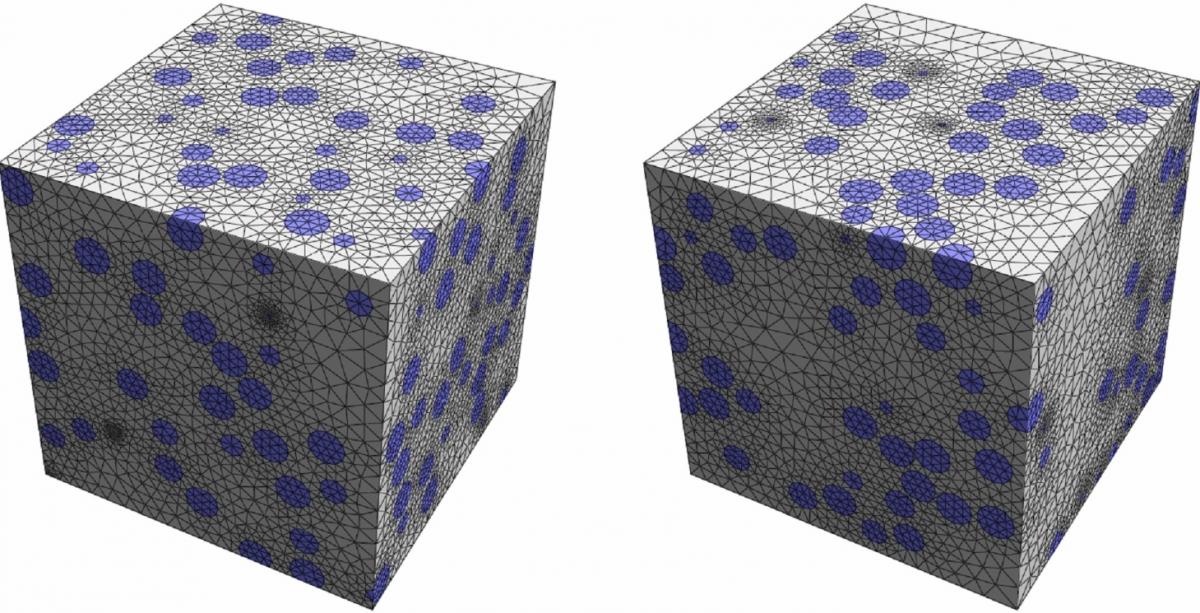Centre of Excellence and Innovation of Composite Materials
Division of Mechanics of Inelastic Materials
 Our research is concentrated on micromechanics of heterogeneous materials such as composites and polycrystalline aggregates. The goal of micromechanical modelling is to predict the macroscopic behaviour of heterogeneous materials from the known properties, microstructure and interaction mechanisms of the constituents at the micro-scale. This line of research is pursued by developing improved scale transition schemes and by applying micromechanical models to various material systems exhibiting thermoelastic, viscoelastic and viscoplastic effects. The range of applications includes, for instance, metal-ceramic composites and graphene-reinforced metal-matrix composites. Closely related research is concerned with formation and evolution of microstructure in metals and alloys undergoing twinning or martensitic phase transformation.
Our research is concentrated on micromechanics of heterogeneous materials such as composites and polycrystalline aggregates. The goal of micromechanical modelling is to predict the macroscopic behaviour of heterogeneous materials from the known properties, microstructure and interaction mechanisms of the constituents at the micro-scale. This line of research is pursued by developing improved scale transition schemes and by applying micromechanical models to various material systems exhibiting thermoelastic, viscoelastic and viscoplastic effects. The range of applications includes, for instance, metal-ceramic composites and graphene-reinforced metal-matrix composites. Closely related research is concerned with formation and evolution of microstructure in metals and alloys undergoing twinning or martensitic phase transformation.
Thanks to their predictive capabilities, the micromechanical models can be used for multi-objective optimization of effective thermo-mechanical properties of composite materials. Here, the aim of our research is to design the microstructure that would result in desired effective properties and thus would be most suitable for a specific application.
Considering the complexity of the material models describing advanced materials at various scales, it is crucial to ensure that the corresponding computational models are robust and numerically efficient. Computer implementation of new models constitutes thus an important part of the complete model development route. To achieve high efficiency, in terms of time spent on computations, but also on computer implementation, we use advanced tools, such as the automatic differentiation (AD) technique implemented in AceGen, an automatic code generation system.

![Finite element modelling of cold compaction of ceramic powder: (a) distribution of density, (b) force-displacement curve [Stupkiewicz et al., CMAME 2015]](/sites/default/files/admin_files/Pictures/ZMM/FEM%20of%20cold%20compaction.jpg)
